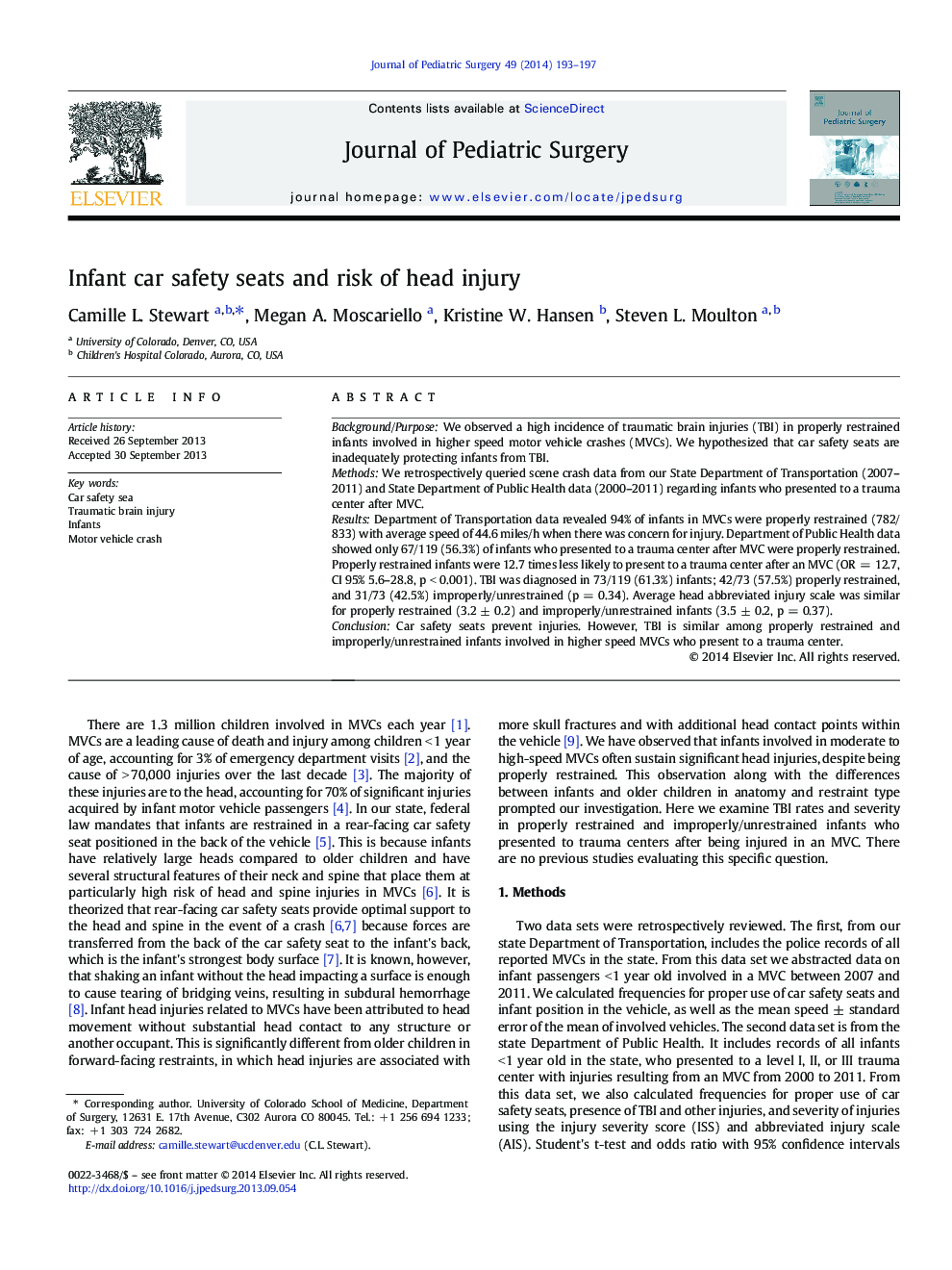| Article ID | Journal | Published Year | Pages | File Type |
|---|---|---|---|---|
| 4156084 | Journal of Pediatric Surgery | 2014 | 5 Pages |
Background/PurposeWe observed a high incidence of traumatic brain injuries (TBI) in properly restrained infants involved in higher speed motor vehicle crashes (MVCs). We hypothesized that car safety seats are inadequately protecting infants from TBI.MethodsWe retrospectively queried scene crash data from our State Department of Transportation (2007–2011) and State Department of Public Health data (2000–2011) regarding infants who presented to a trauma center after MVC.ResultsDepartment of Transportation data revealed 94% of infants in MVCs were properly restrained (782/833) with average speed of 44.6 miles/h when there was concern for injury. Department of Public Health data showed only 67/119 (56.3%) of infants who presented to a trauma center after MVC were properly restrained. Properly restrained infants were 12.7 times less likely to present to a trauma center after an MVC (OR = 12.7, CI 95% 5.6–28.8, p < 0.001). TBI was diagnosed in 73/119 (61.3%) infants; 42/73 (57.5%) properly restrained, and 31/73 (42.5%) improperly/unrestrained (p = 0.34). Average head abbreviated injury scale was similar for properly restrained (3.2 ± 0.2) and improperly/unrestrained infants (3.5 ± 0.2, p = 0.37).ConclusionCar safety seats prevent injuries. However, TBI is similar among properly restrained and improperly/unrestrained infants involved in higher speed MVCs who present to a trauma center.
